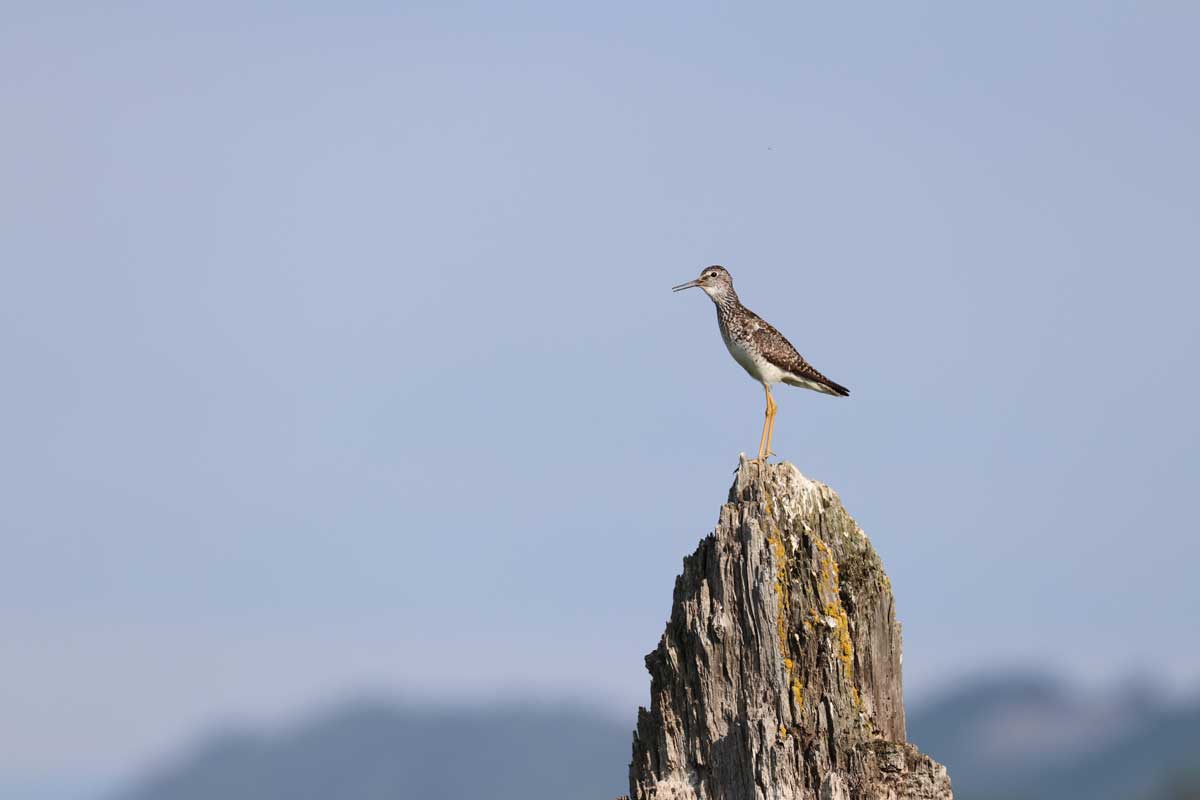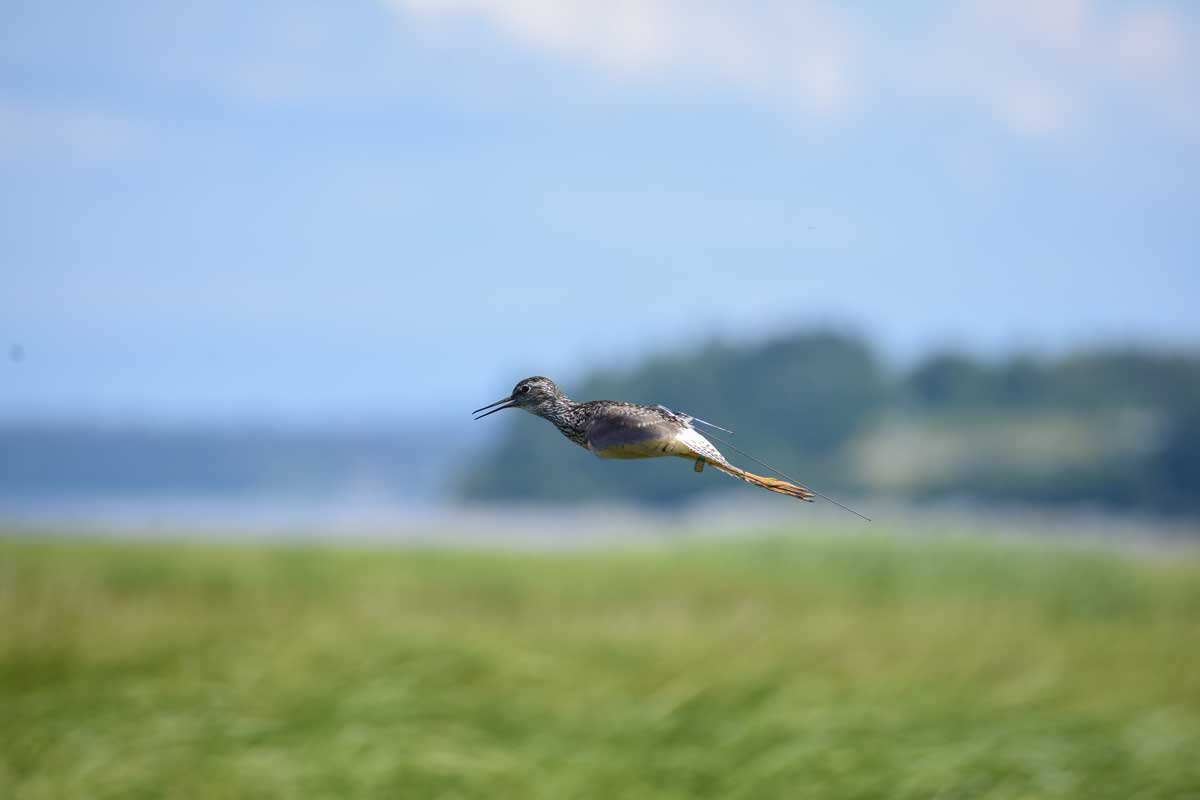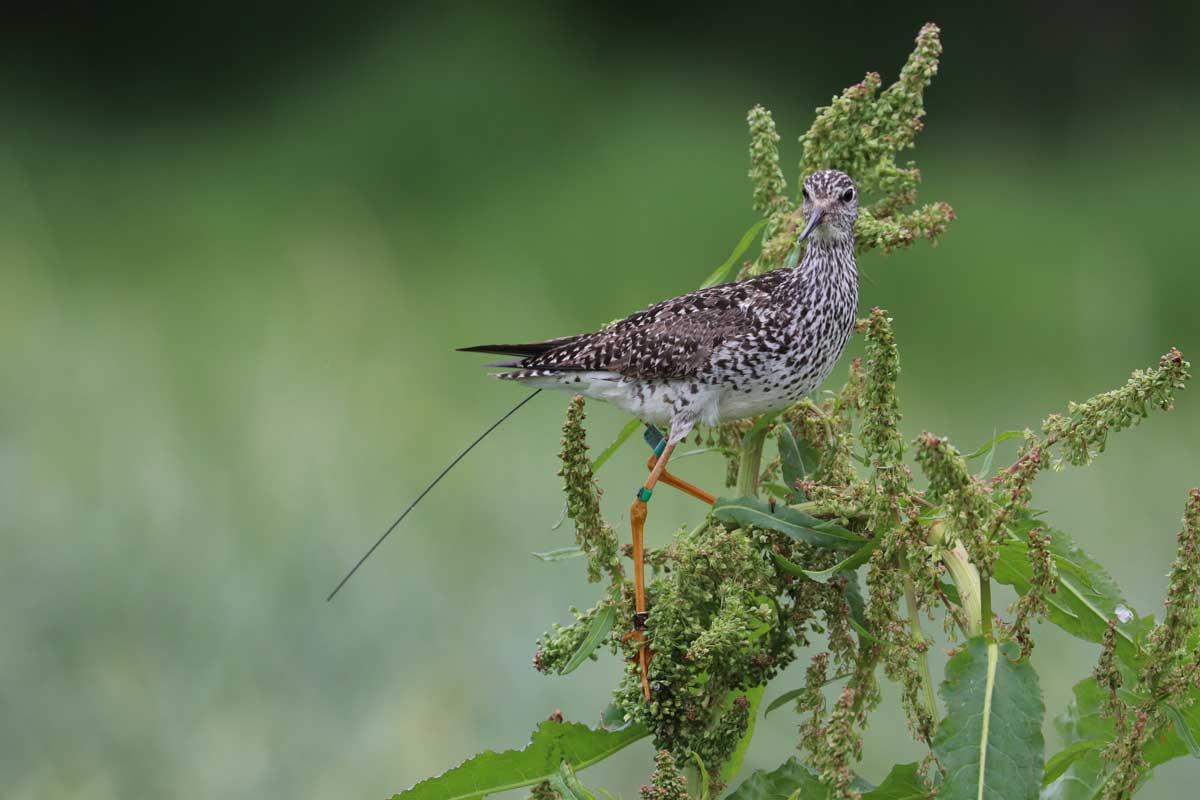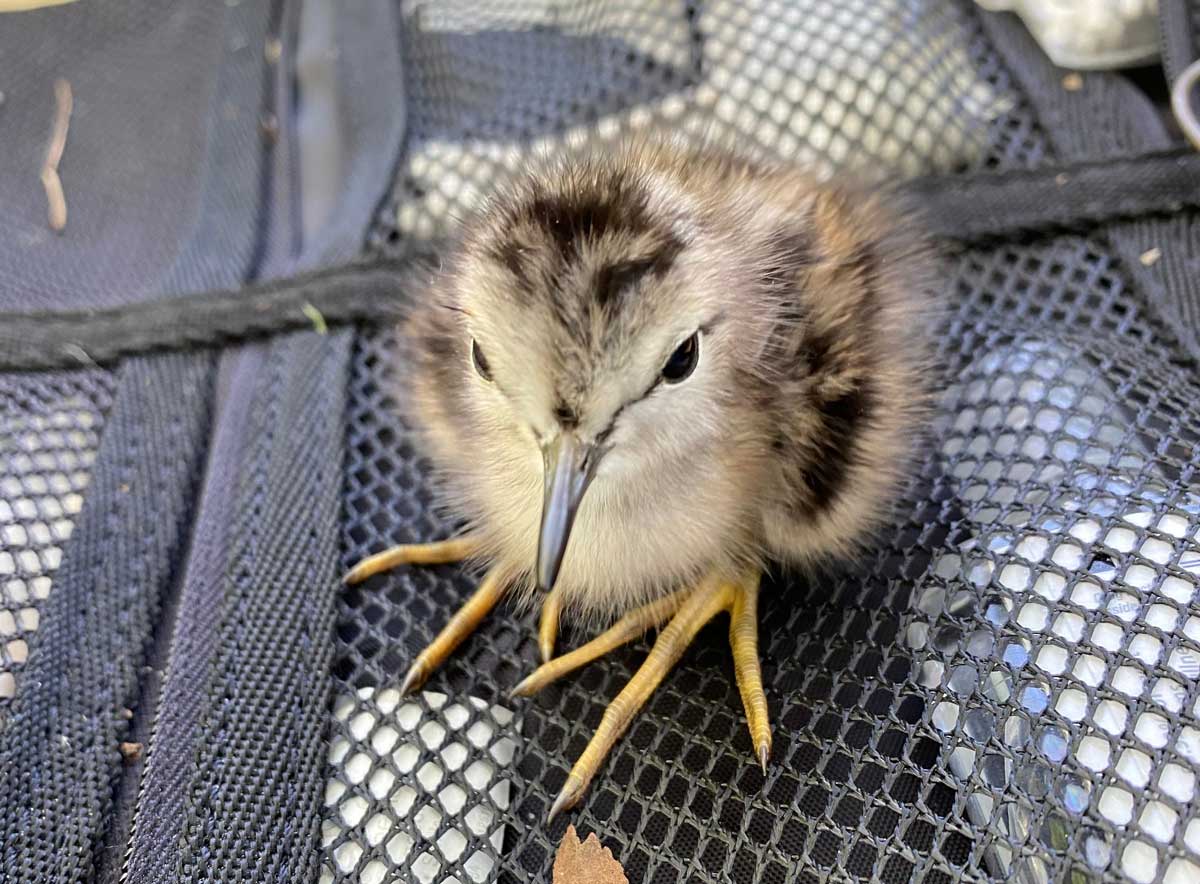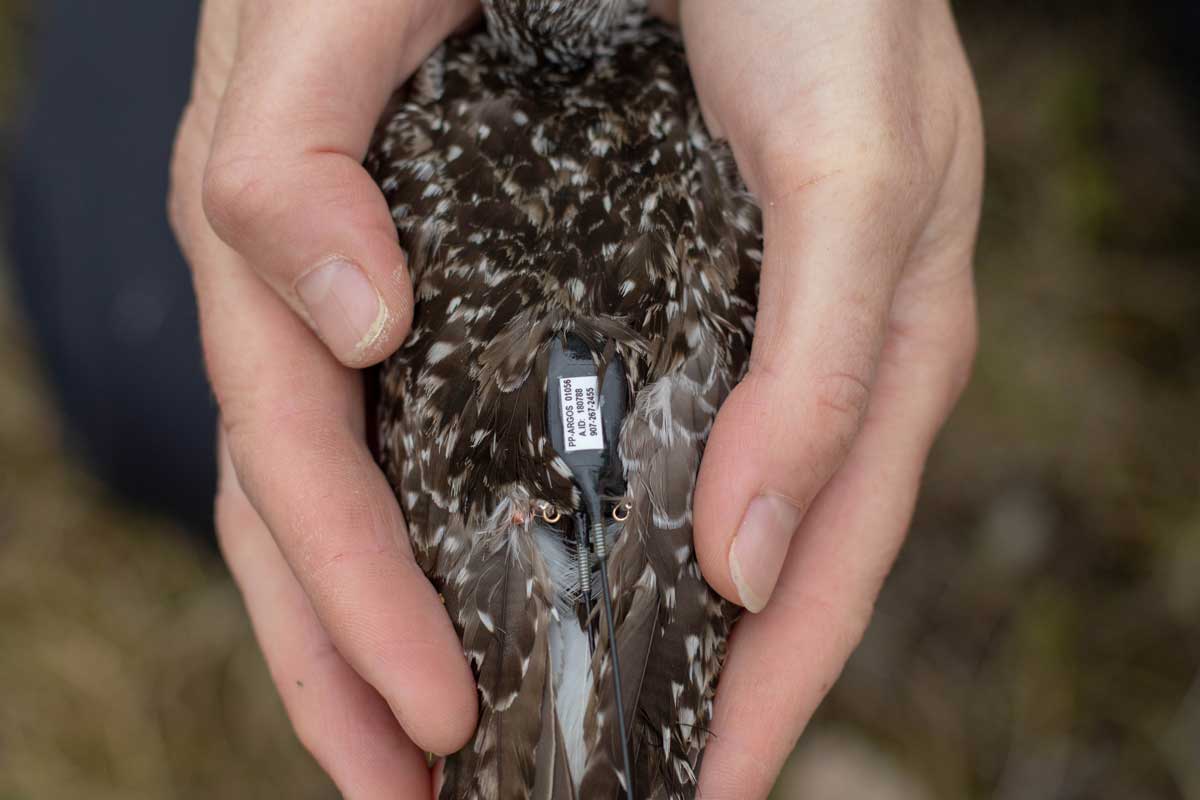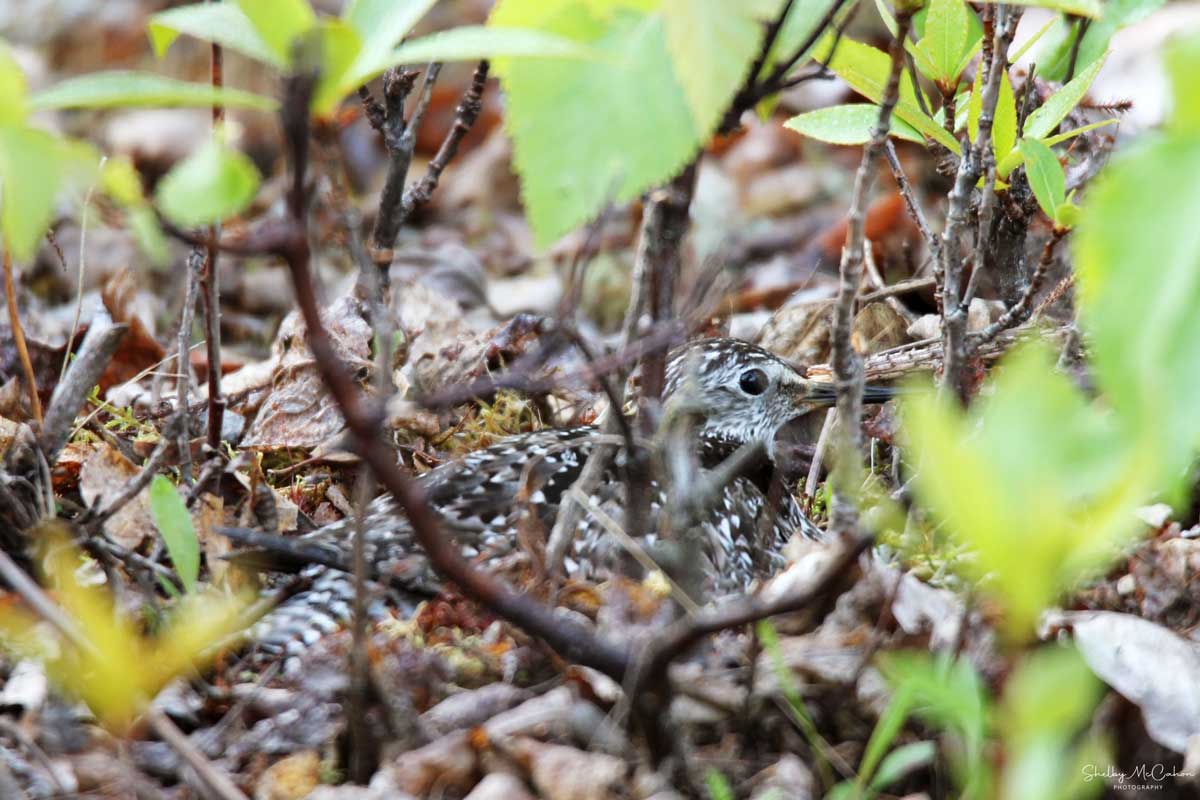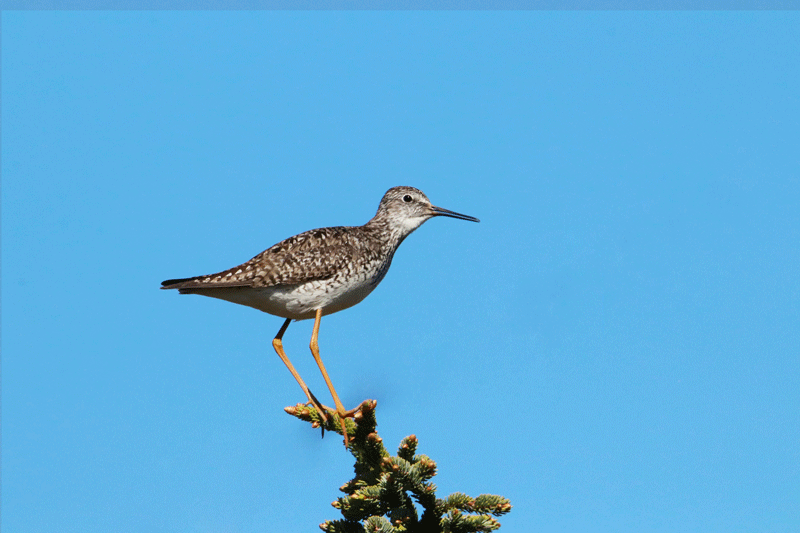Lesser Yellowlegs Migration and Demography
Lesser Yellowlegs Research and Conservation
The Lesser Yellowlegs is a steeply declining shorebird that breeds in boreal wetlands across North America and undertakes a 8000-mile journey twice a year from Alaska to South America. Although widespread, this species has declined by 70-80% over the past 5 decades. Unsustainable harvest during fall migration, habitat loss due to agriculture, and pesticides are thought to be the main threats to this species.
What we are doing
To better understand and mitigate these threats, the Alaska Department of Fish and Game, with help from partners such as the U.S. Fish and Wildlife Service, Trent University, and Environment and Climate Change Canada, are investigating the migration, genetics, nesting ecology and survival of Lesser Yellowlegs. Researchers from across the Western Hemisphere recently formed the International Lesser Yellowlegs Working Group, which now consists of 24 members from multiple disciplines and countries.
What we have learned
The team deployed satellite transmitters at sites across the breeding range including Anchorage, Kanuti National Wildlife Refuge, Yellowknife, Churchill, James Bay, and Mingan, Quebec. Transmitter data revealed that these birds, weighing as much as a deck of cards, are capable of flying all the way from Alaska to Argentina. Many birds from disparate breeding regions stopped to refuel in the prairie pothole region prior to migrating to wetlands and agricultural areas across South America. Birds over-wintered in Mexico, Bolivia, Venezuela, Suriname, Cuba, Haiti, Ecuador, Colombia, Argentina, and Brazil. Key stopover and over-wintering regions included the Prairie Potholes, the Pampas of Argentina, the Gulf Coast, and Mississippi Alluvial Valley. The working group is now strategically targeting these areas for conservation actions.
New projects
Two graduate students are currently investigating agricultural practices and their effects on Lesser Yellowlegs and other shorebirds at key stopover areas in North Dakota and Mississippi. These projects will quantify food availability, refueling rates, and pesticide exposure across different agricultural management practices. Ultimately, we hope to identify farming practices that are beneficial to both farmers and shorebirds. Meanwhile, researchers on the breeding grounds are quantifying nesting success, breeding habitat, and adult survival rates. These studies will improve our understanding of the drivers of population declines in this species.
Other resources
- Road to Recovery Pilot Species Working Group page
- Lesser Yellowlegs 2020 Newsletter (PDF 424 kB)
- Story Map describing a year in the life of a Lesser Yellowlegs
Recent publications
- Movement and Genomic Methods Reveal Mechanisms Promoting Connectivity in a Declining Shorebird: The Lesser Yellowlegs
- Flyway-scale GPS tracking reveals migratory routes and key stopover and non-breeding locations of lesser yellowlegs
- Eastern-breeding Lesser Yellowlegs are more likely than western-breeding birds to visit areas with high shorebird hunting during southward migration
Funding
This work would not be possible without funding from the Alaska Department of Fish & Game, the U.S. Fish and Wildlife Service, the Knobloch Family Foundation, the U.S. Department of the Air Force, and Environment and Climate Change Canada.
Video
Animated video of Lesser Yellowlegs Migration
During the 2018 and 2019 field seasons, 85 Pinpoint GPS-Argos satellite tags were deployed on adults from Anchorage, Kanuti National Wildlife Refuge, Yellowknife, Churchill, James Bay, and Mingan, Quebec. Transmitter data revealed that these birds, weighing as much as a deck of cards, are capable of flying from Alaska to Argentina. Many birds from disparate breeding regions stopped to refuel in the prairie pothole region prior to migrating to wetlands and agricultural areas across South America. Birds over-wintered in Mexico, Bolivia, Venezuela, Suriname, Cuba, Haiti, Ecuador, Colombia, Argentina, and Brazil. Video made by Laura McDuffie.
Gallery
